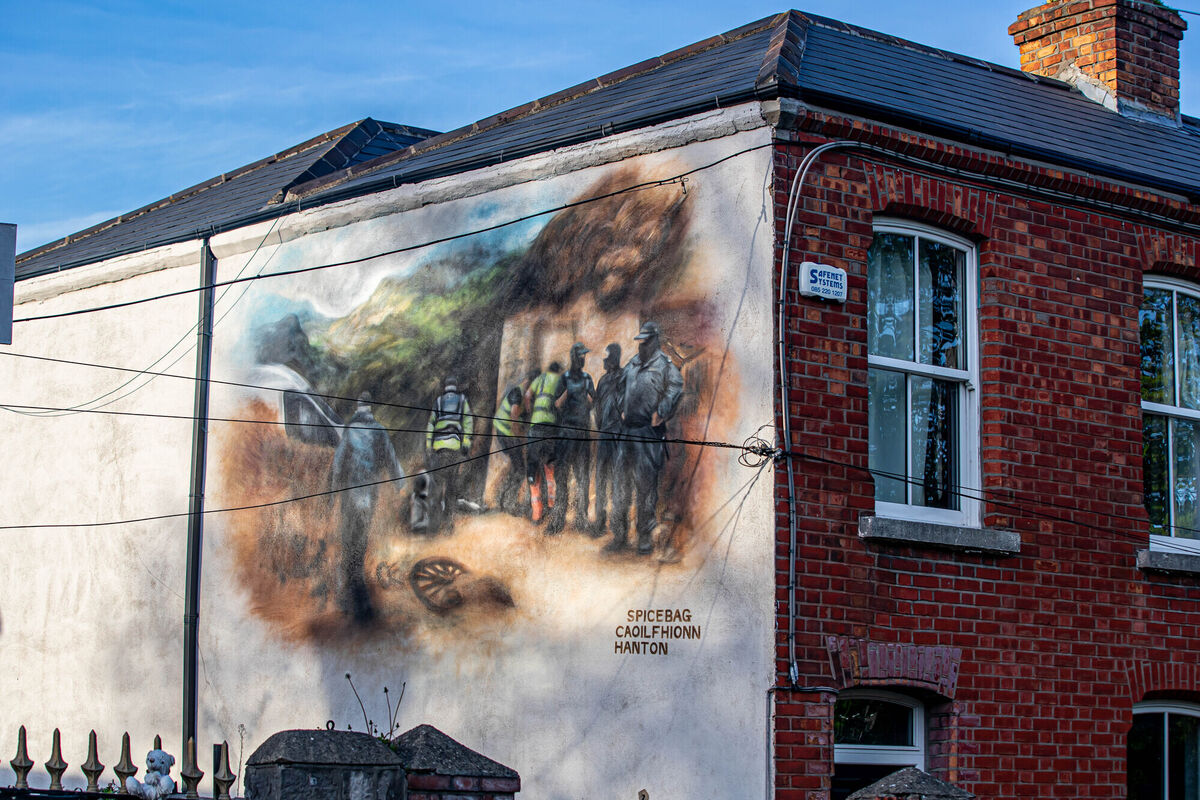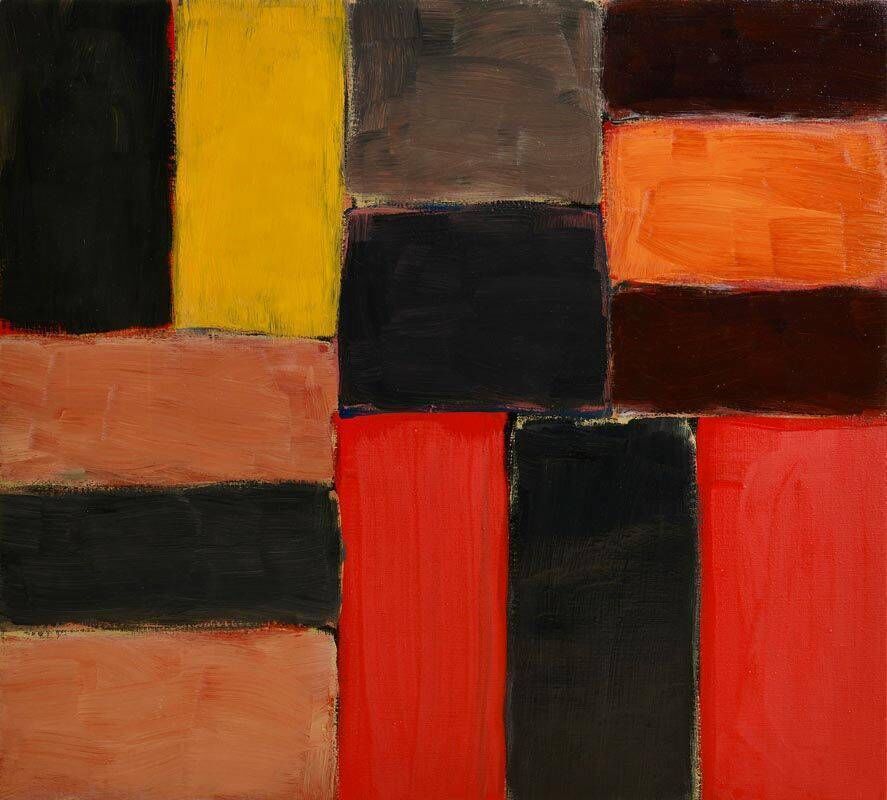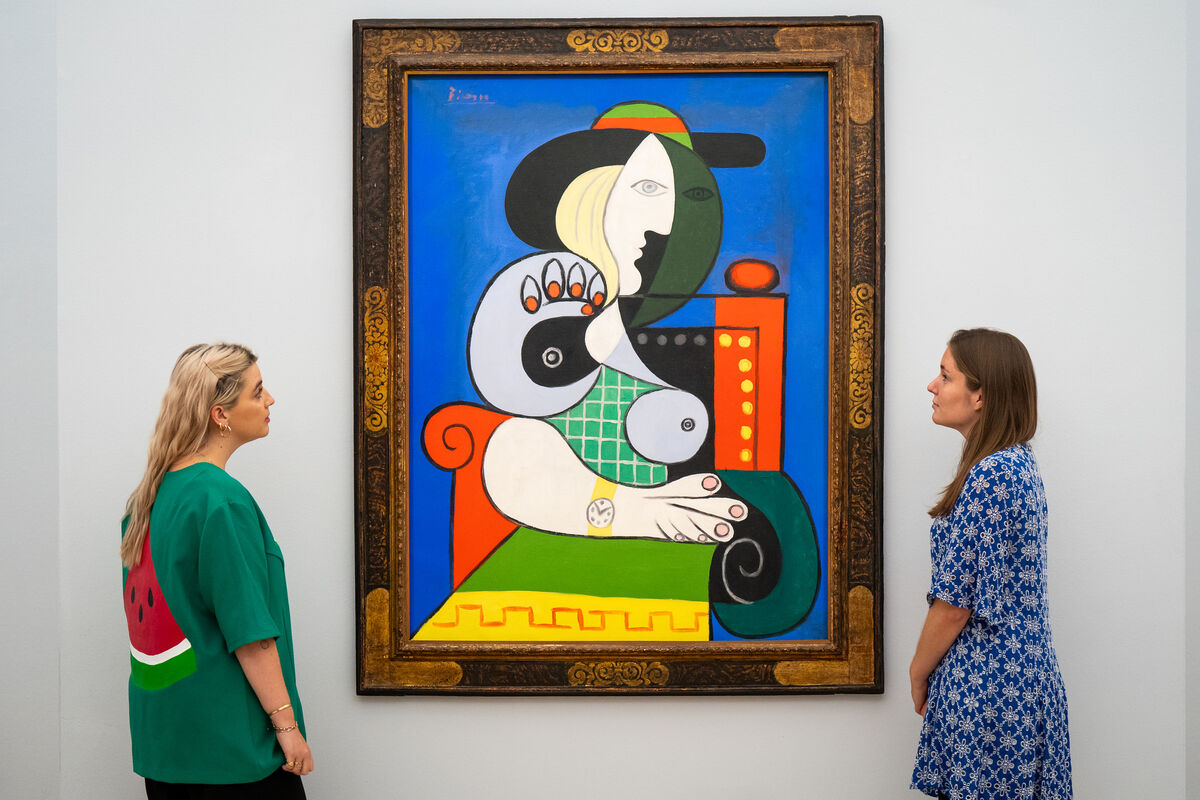Spicebag, Cork sculptures, NFTs: 10 visual art talking points in 2023

L-R: Rachel Parry's Kelp Cailleach; the new statue of Michael Collins on Grand Parade; Nan Goldin
In February, Cork Corporation, with funding from Fáilte Ireland under the Urban Animation Scheme, launched Island City, Cork’s Urban Sculpture Trail, a project that has seen five new public artworks installed around the city. The works are temporary, and will be in place for five years. There's been a somewhat mixed reaction to the project so far, but there's plenty time yet for public affections to swing towards the pieces that form the biggest single investment in public art in the city.
Meanwhile, in a separate development, Kevin Holland’s bronze sculpture of the revolutionary leader Michael Collins, based on a photograph taken in Wexford in 1922, has taken up permanent residence outside the City Library on the Grand Parade. The fact that Collins is depicted with his beloved bicycle will surely enhance the Corporation’s efforts to encourage cycling in the city
This month, ArtReview magazine named Nan Goldin as the contemporary art world’s most influential figure. Goldin, an American artist best known for her photographic project The Ballad of Sexual Dependency, was recognised for founding the advocacy group PAIN (Prescription Addiction Intervention Now) in 2017. PAIN campaigns against sponsorship of art institutions by the Sackler family, the owners of Purdue Pharma, blamed by many for the opioid crisis. Among the institutions that have agreed to remove the family name from its galleries are the Louvre in Paris and the Metropolitan Museum of Art in New York. Goldin’s work with PAIN was highlighted in Laura Poitras’ documentary, All the Beauty and the Bloodshed, which won the Golden Lion Award at the Venice Film Festival in September 2022.

The Ancient Greek sculptures known as the Elgin Marbles are believed to date to the 5th century BC. They decorated the former temple on the Athenian Acropolis in Greece until the early 19th century, when they were removed to Britain by Thomas Bruce, 7th Earl of Elgin. Greece has long clamoured for their return. In a recent interview with the BBC, Prime Minister Kyriakos Mitsotakis described Britain’s retention of the Marbles as being akin to the Mona Lisa being cut in half. His British counterpart Rishi Sunak cancelled a scheduled meeting between the two in response. The stand-off is no doubt being followed with particular interest in Coachford, Co Cork; a number of ogham stones originating in the neighbourhood are – like the Elgin Marbles - currently on display in the British Museum.

In March, the Irish artist Adam Doyle AKA Spicebag posted his digital image The Eviction on Instagram with the caption, “It’s that time again.” The image conflated a scene from the Famine era painting An Irish Eviction – attributed to Daniel MacDonald – with contemporary images of hooded gardaí assisting in evictions. It quickly went viral, leading to a spirited showdown on Virgin Media’s The Tonight Show between Doyle and Irish Independent Ireland editor Fionnán Sheehan. When Sheehan described Doyle’s portrayal of the gardaí as “disrespectful”, Doyle responded that his work was “political satire.” One positive outcome of their disagreement was that Doyle’s limited edition print of the image quickly sold out, raising €30,000 for homelessness charities.

The Dublin-born abstract artist Seán Scully’s painting Raval Rojo – a 92 x 102cm composition of ochre, orange, red and black stripes – appeared at Morgan O’Driscoll’s online auction of Irish and International Art in April. The painting had an estimate of between €400,000 - €600,000, and sold for €580,000 to an unidentified collector. The price was the highest paid for an artwork at auction in Ireland in 2023. Raval Rojo – the name is Catalan for ‘red ravine’ - is part of Scully’s Wall of Light series. The painting was completed in 2004 and was bought through the Kerlin Gallery in Dublin after being shown at its Celebrating the Best of Contemporary Art exhibition the following year.

In November, Pablo Picasso’s Femme à la montre (Woman with a watch) sold at auction at Sotheby’s New York for €128 million, making it the most expensive artwork sold in 2023. The model was Marie-Therese Walter, with whom Picasso began an affair when she was 17 and he was 45, and still married to the ballerina Olga Khokhlova. The portrait, painted in 1932, depicts Walter sitting upright in a chair, wearing a green dress and a wristwatch. It was acquired by the American collector Emily Fisher Landau in 1968, and hung above the mantel in her apartment in Manhattan until her death, aged 102, in March. Femme à la montre was sold as part of an auction of 120 works in Landau’s estate, which fetched over €390 million, a record for a body of art collected by a woman. The buyer chose to remain anonymous.
Trading in non-fungible tokens – certificates of ownership of digital artworks such as photographs, videos and audio files – peaked at over €15.5 billion in 2021, when the artist Pak set a record by selling a work entitled Merge for €84 million. With few outside the crypto-economy quite understanding what NFTs actually are, it comes as no surprise to learn that the bottom has already fallen out of the market. By September 2023, it was reported that 95% of NFTs had fallen to zero monetary value.

The Crawford Art Gallery in Cork, which is to close for a €29 million redevelopment project next year, has recently acquired a number of important Irish artworks, including Harry Clarke’s The Colloquy of Monos and Una and Seán Keating’s The Window. Clarke’s The Colloquy of Monos and Una is a colour plate illustration for a 1923 edition of Edgar Allan Poe’s Tales of Mystery and Imagination, and will join the gallery’s extensive collection of the artist’s watercolours and works in stained glass. Keating’s painting The Window dates from 1924, and depicts the artist’s wife May (née Walsh), a noted feminist and socialist who worked as personal secretary to the suffragette Hanna Sheehy-Skeffington. The Crawford Collection already includes a number of significant works by Keating such as his celebrated War of Independence painting Men of the South.
Among the outstanding exhibitions in Ireland this year were Taking Form at the Lavit Gallery in Cork, which featured mostly sculptural work from Maud Cotter, Vivienne Roche, and Eilis O'Connell; Following Threads, the group exhibition of textiles-based artworks at the Crawford Art Gallery; and Na Cailleacha at the Dock in Carrick-in-Shannon, Co Leitrim, which featured what is surely the Irish Artwork of the Year, Rachel Parry’s Kelp Cailleach (with reference to Paula Rego’s Angel), a photographic work that depicts the artist in a dress of seaweed on the shore near her home in Allihies, on the Beara peninsula in West Cork.

Ireland lost one of its best-loved artists in the spring, with the passing of Camille Souter. Born Betty Holmes in Northampton, England, in 1929, she was one year old when her family moved to Glenageary, Co Dublin. She began painting while recovering from tuberculosis, and acquired the nickname Camille from her first husband Gordon Souter. With her second husband Frank Morris and their five children, Camille Souter lived in precarious circumstances on Calary Bog in Co Wicklow for many years, before relocating to Achill Island in 1986. Elected a Saoi by Aosdána in 2008, she had the satisfaction of seeing her work collected by most of Ireland’s major art institutions, including the Irish Museum of Modern Art in Dublin and the Crawford Gallery in Cork. Souter died on March 3, aged 93.




